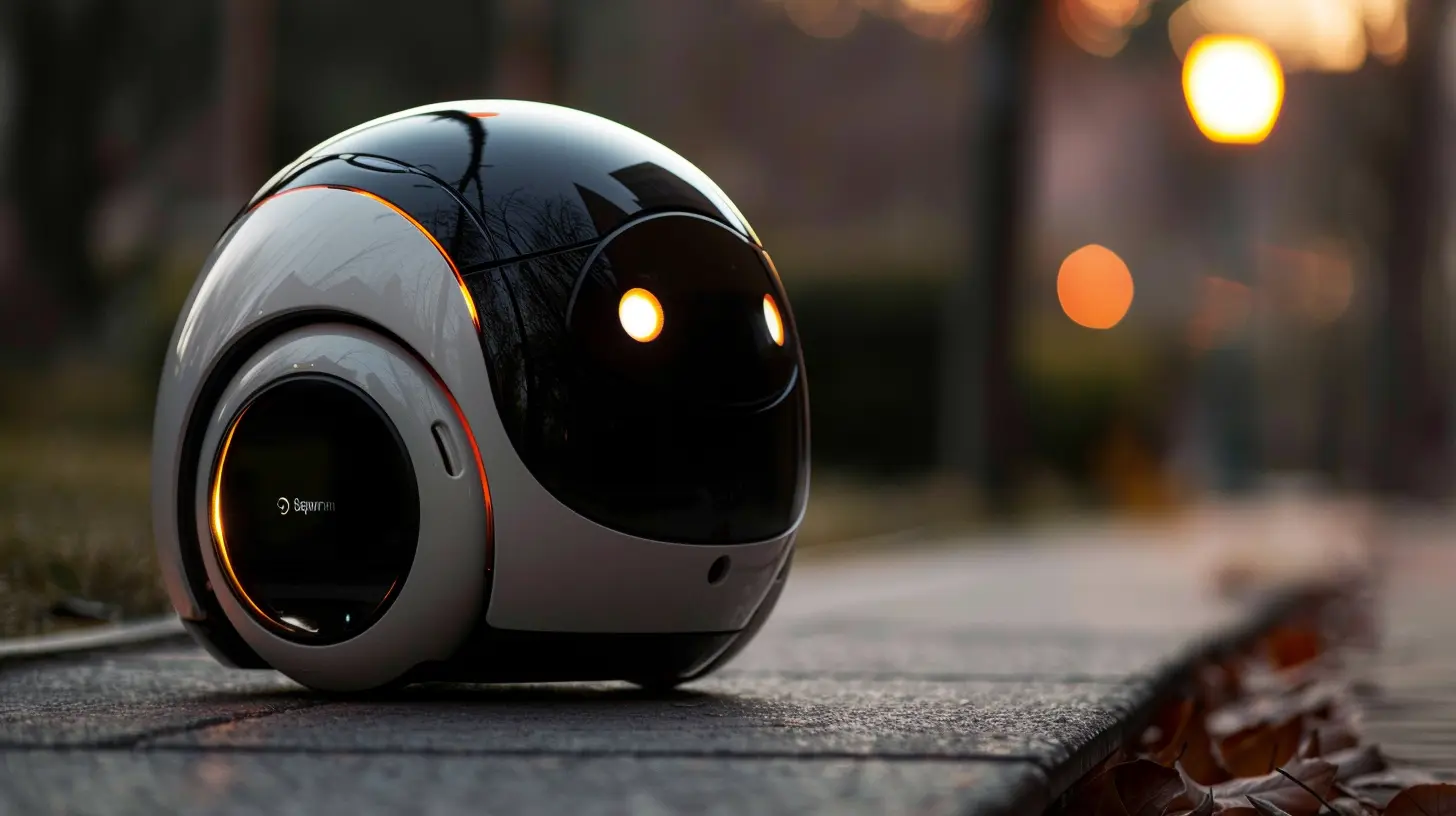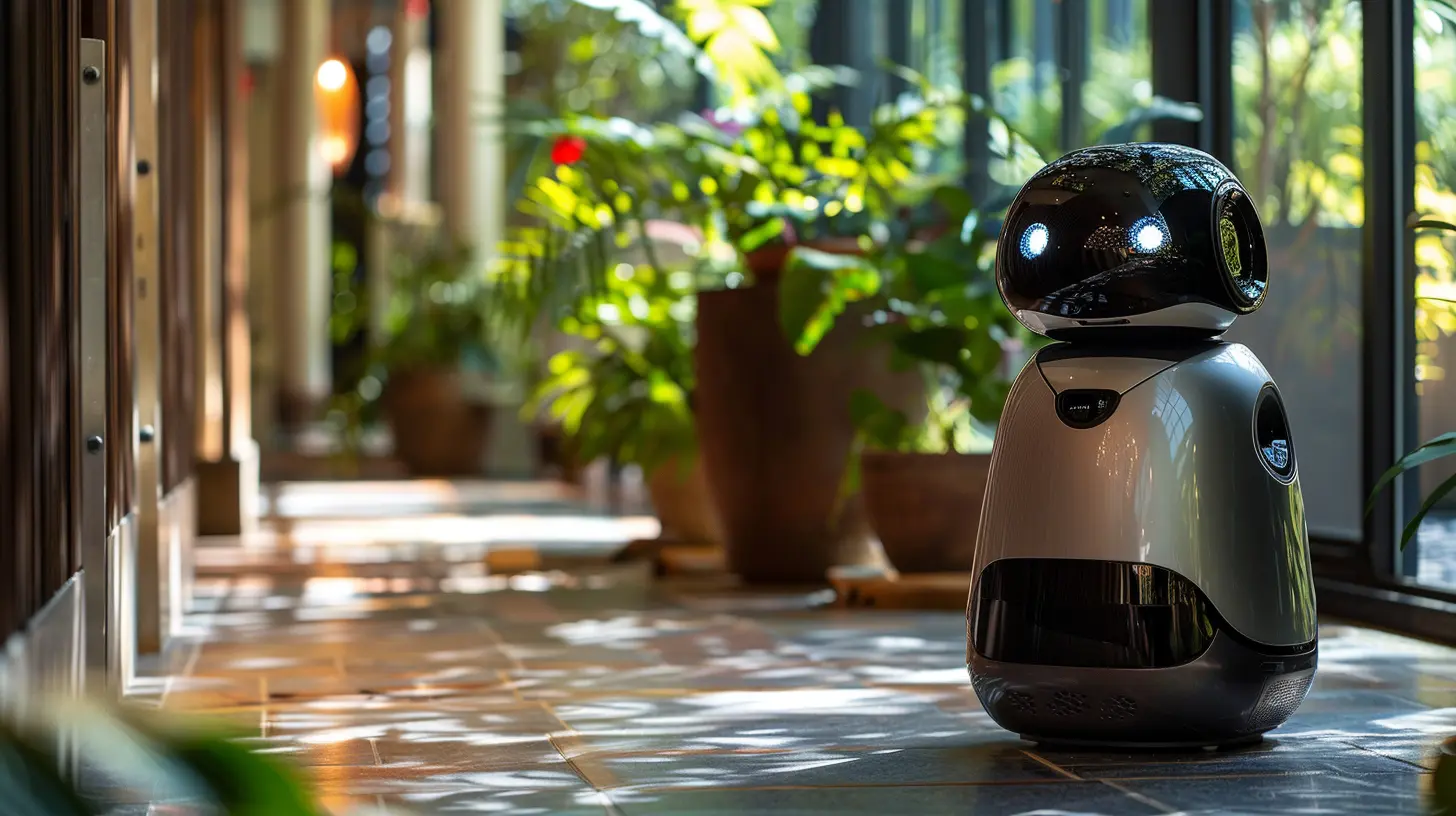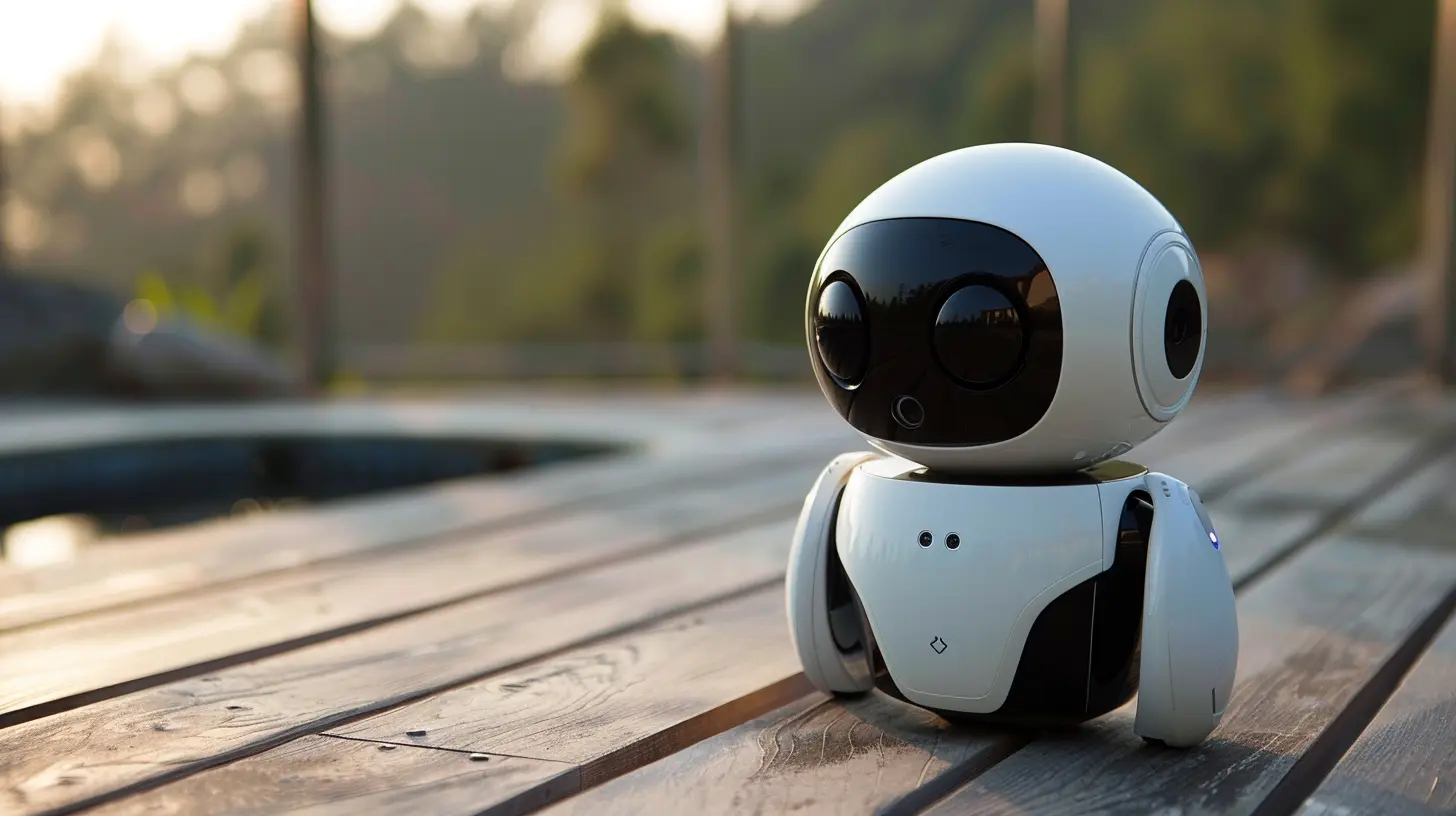Exploring the Latest Trends in Personal Robotics
22 November 2024
Personal robotics is no longer a far-off concept from sci-fi movies. Today, robots are inching closer to becoming part of our everyday lives. From vacuuming your floors to helping with healthcare, personal robots are evolving rapidly, offering a mix of convenience, efficiency, and even entertainment. So, what exactly is happening in the world of personal robotics? Buckle up, because we’re about to dive into some of the most exciting trends that are shaping the future of personal robots.

The Rise of Personal Robotics
Before we get into the nitty-gritty of the latest trends, let’s take a step back: What exactly is a personal robot? Well, it’s essentially a robot designed to assist individuals with everyday tasks—think of it as your own personal assistant, but one that’s made of metal and circuits. Over the years, personal robots have moved from basic machines that could only perform simple tasks to highly intelligent devices that can interact with their environment and even learn from their users.Today, thanks to innovations in artificial intelligence (AI), machine learning, and robotics engineering, the capabilities of personal robots have expanded dramatically. But where is this all heading? Let’s explore.

Trend 1: AI-Powered Automation
AI is the driving force behind most advancements in personal robotics. Modern personal robots can do more than just follow pre-programmed instructions. With AI, these robots can analyze their surroundings, make decisions, and adapt to changing situations. Imagine your home assistant robot noticing that you're running low on groceries and automatically ordering more, or a robot that learns your daily routine and adjusts its tasks accordingly.AI-based automation is making robots more intuitive and responsive. The goal is to develop robots that don’t just follow commands but understand context. This means your personal robot could eventually learn your preferences, like the way you like your coffee, and prepare it just the way you want without you even asking. Sounds like a dream, right?

Trend 2: Human-Robot Interaction (HRI)
As robots become more advanced, the way we interact with them is evolving too. Human-Robot Interaction, or HRI for short, is all about creating robots that can interact naturally with humans. Gone are the days of pushing buttons or typing commands. Now, voice recognition, natural language processing, and even gesture control are becoming standard features in personal robots.Think about it—just like you talk to your smartphone's voice assistant, you could soon be chatting with your personal robot as if it were a friend. Some cutting-edge robots are even capable of detecting and responding to human emotions through facial recognition and tone analysis. Imagine a robot that can sense when you’re stressed and offer to help by playing calming music or suggesting you take a break. That’s not just convenience—that’s emotional intelligence!

Trend 3: Social and Companion Robots
Robots aren’t just about completing tasks anymore. Increasingly, they’re designed to be companions. Some of the most exciting developments in personal robotics involve robots that can provide emotional support and companionship. Whether it’s a robot that talks to you when you’re lonely or one that plays games with your children, social robots are becoming an integral part of modern households.For instance, robots like Jibo or the newer Moxie are designed to engage in meaningful conversations, remember personal details, and even have a personality of sorts. These robots can provide companionship for older adults, helping them feel less isolated. They can also be educational tools for kids, teaching them new skills in a fun and interactive way. It’s almost like having a pet, but one that can read bedtime stories or help with homework!
Trend 4: Health and Wellness Robots
Another area where personal robots are making waves is health and wellness. Imagine a robot that not only reminds you to take your medication but also monitors your vital signs, encourages you to exercise, and even assists with physical therapy. These types of robots are already making a difference in healthcare, especially for the elderly or people with disabilities.Robotic companions in healthcare are designed to assist with everything from mobility to mental health. Some robots are equipped with sensors that can track your health metrics like heart rate, respiration, and even detect falls. Others are designed to provide cognitive stimulation through games and conversation, helping to combat loneliness and cognitive decline in seniors.
For example, robotic pets like Paro, a therapeutic seal, have been shown to reduce stress and improve overall well-being in patients. Meanwhile, robots like the ElliQ are designed to keep seniors engaged, offering reminders, health tracking, and even conversation starters to keep their minds sharp.
Trend 5: Home Robotics for Everyday Tasks
By now, most of us are familiar with robotic vacuums like the Roomba, but the world of home robotics is expanding far beyond just cleaning your floors. Today’s personal robots can handle a variety of household chores, from mowing the lawn to folding laundry. And with advancements in machine learning and sensors, these robots are becoming smarter and more efficient.Take for example, robotic lawn mowers that can map your yard and mow it perfectly without any supervision. Or laundry-folding robots like FoldiMate, which can neatly fold your clothes in minutes. These robots are designed to simplify your life by taking over tedious, time-consuming chores.
In the future, we may see kitchen robots that can prepare meals, clean up after, and even load the dishwasher. The idea is to have robots that seamlessly integrate into our homes, making daily tasks almost effortless. Who wouldn’t want that?
Trend 6: Personalized Learning Robots
One of the coolest trends in personal robotics is the rise of personalized learning robots. These are robots designed to adapt to the user’s learning style and pace. Whether it’s helping kids learn math or teaching adults a new language, these robots can provide personalized tutoring and support.With AI-driven learning algorithms, these robots can analyze how a user learns best and tailor lessons accordingly. For example, if a child struggles with a particular math concept, the robot can offer alternative explanations or additional practice problems. Some robots can even use gamification to make learning more engaging and fun.
For adults, these robots can offer language practice, playing the role of a conversation partner who never gets tired or frustrated. With the ability to provide immediate feedback and track progress, learning robots are making education more accessible and personalized than ever before.
Trend 7: Customizable and Modular Robotics
One size doesn’t fit all, and that’s especially true in the world of personal robotics. Enter modular robots—robots that can be customized to meet your specific needs. These robots are composed of different modules or components that can be swapped out or added depending on the task at hand.For instance, you could have a basic robot that cleans your home, but by adding a new module, it could also help with cooking or monitoring your health. This kind of flexibility makes robots more versatile and tailored to individual users. It’s like building your own perfect robot assistant, one piece at a time.
This trend is gaining traction in the consumer market, with companies offering robots that can be upgraded with new features and capabilities as technology evolves. It’s a smart way to future-proof your investment in personal robotics, ensuring your robot can grow and adapt along with your needs.
Trend 8: Affordability and Accessibility
One of the biggest barriers to widespread adoption of personal robots has been cost. Advanced robots used to come with a hefty price tag, making them accessible only to the wealthy or tech enthusiasts. However, as technology becomes more affordable, personal robots are becoming more accessible to the average consumer.Manufacturers are finding ways to produce robots at lower costs without sacrificing functionality. This is opening the door for more people to bring robots into their homes. Whether it’s a robot that vacuums your floors or a companion robot that interacts with your family, the prices are dropping, making personal robots more of a reality for everyone.
What’s Next for Personal Robotics?
So, where are we headed? The future of personal robotics looks incredibly promising. As AI continues to evolve, robots will become even more autonomous, capable of learning and adapting to our needs almost seamlessly. We could see robots that handle complex tasks like cooking gourmet meals, providing personalized healthcare, or even managing entire smart homes.Additionally, as robots become more affordable, we can expect them to become commonplace in households around the world. The real question is: How will you use a personal robot? Will it be for convenience, companionship, or something else entirely? Whatever the case, the future of personal robotics is bright, and it’s only a matter of time before robots become as integral to our lives as smartphones are today.
Final Thoughts
Personal robotics is a rapidly growing field, transforming the way we live, work, and interact with technology. Whether it’s a robot that helps with daily chores, offers emotional support, or assists with healthcare, personal robots are becoming more intelligent, intuitive, and accessible. The latest trends in AI-powered automation, human-robot interaction, and customizable robotics are pushing the boundaries of what’s possible.As we move into the future, personal robots will likely play an even bigger role in our lives, offering convenience, companionship, and support in ways we’ve never imagined. So, whether you're curious about robots or already daydreaming about your future robotic assistant, one thing is certain: the age of personal robotics is here, and it's here to stay.
all images in this post were generated using AI tools
Category:
RoboticsAuthor:

Michael Robinson
Discussion
rate this article
22 comments
Martha Bellamy
Personal robotics: redefining daily human interactions.
February 21, 2025 at 11:20 AM

Michael Robinson
Absolutely! Personal robotics is transforming how we connect and engage with each other, enhancing everyday interactions and fostering new relationships.
Dorothy O'Brien
As we venture deeper into the realm of personal robotics, whispers of sentience and unforeseen capabilities surface. Are we shaping our assistants, or are they subtly shaping us?
February 5, 2025 at 12:38 PM

Michael Robinson
It's a fascinating interplay. While we design robots to serve us, their responses and capabilities can influence our behaviors and expectations, leading to a mutual shaping of identity and function.
Zayla McDowney
Personal robotics is transforming everyday life, enhancing convenience and efficiency, while raising important questions about ethics and human-robot interaction. Exciting times ahead!
January 31, 2025 at 8:22 PM

Michael Robinson
Thank you for your insights! Indeed, as personal robotics evolves, balancing innovation with ethical considerations will be crucial for a harmonious future.
Lorna Pacheco
Great insights! The advancements in personal robotics are exciting, but practical applications still need more focus.
January 27, 2025 at 4:03 AM

Michael Robinson
Thank you! I completely agree—while the technology is promising, prioritizing practical applications will drive meaningful impact.
Yasmeen Harmon
This article offers a succinct overview of the evolving landscape of personal robotics. While it highlights innovative advancements, it’s important to consider ethical implications and accessibility to ensure these technologies benefit a broader audience.
January 22, 2025 at 9:19 PM

Michael Robinson
Thank you for your insightful comment! Addressing ethical implications and ensuring accessibility are indeed crucial for maximizing the benefits of personal robotics for everyone.
Willow McKinney
Personal robotics: because who needs human interaction when your robot can judge you from across the room?
January 19, 2025 at 1:20 PM

Michael Robinson
Humor aside, personal robotics can enhance our lives by providing assistance and companionship, bridging the gap between technology and meaningful interaction.
Peyton McGivern
Exciting insights! Personal robotics advances are reshaping daily life and enhancing convenience for everyone.
January 16, 2025 at 8:46 PM

Michael Robinson
Thank you! I'm glad you found the insights exciting—it's amazing to see how personal robotics is transforming our everyday lives.
Zevros Klein
Personal robots are stepping out of sci-fi and into our homes! Can't wait for my future robot buddy to help with chores—and maybe share a pizza or two!" 🍕🤖
January 11, 2025 at 3:49 AM

Michael Robinson
Absolutely! The future of personal robotics is exciting, and having a robot buddy for chores (and pizza!) could soon be a reality. 🍕🤖
Diana Pratt
Personal robotics: when your vacuum can finally tell you to pick up your socks. It's like having a roommate that never eats your snacks!
January 3, 2025 at 1:51 PM

Michael Robinson
Absolutely! The blend of functionality and companionship in personal robotics is transforming our daily lives, making chores easier while adding a touch of humor.
Teagan McCray
Embrace the future: personal robotics is revolutionizing our daily lives and possibilities!
December 29, 2024 at 5:39 AM

Michael Robinson
Absolutely! Personal robotics is transforming our daily routines, making tasks easier and enhancing our lives in exciting new ways.
Solaria McWain
This article brilliantly highlights the burgeoning field of personal robotics, showcasing how advancements in AI, machine learning, and automation are transforming everyday life. As robots become more integrated into our homes and routines, the potential for improved efficiency and companionship is immense. Exciting times lie ahead for tech enthusiasts!
December 23, 2024 at 1:33 PM

Michael Robinson
Thank you for your insightful comment! I'm glad you enjoyed the article and share the excitement about the future of personal robotics.
Harvey Beck
Great article! It's exciting to see how personal robotics is evolving. Your insights into the latest trends inspire both curiosity and optimism about the future. Looking forward to seeing how these innovations shape our daily lives!
December 11, 2024 at 9:29 PM

Michael Robinson
Thank you for your kind words! I'm glad you found the article inspiring. Exciting times are ahead in personal robotics!
Tabitha Rogers
Great insights on personal robotics! Exciting to see how these trends will shape our everyday lives. Thank you!
December 3, 2024 at 7:48 PM

Michael Robinson
Thank you for your kind words! I'm glad you found the insights valuable. Exciting times ahead for personal robotics!
Raelyn Lamb
Personal robotics is no longer just a futuristic dream; it's a rapidly evolving reality. From AI companions to smart home assistants, these innovations are reshaping our daily lives—let's hope they remember our coffee preferences too!
December 1, 2024 at 11:33 AM

Michael Robinson
Absolutely! The integration of AI into personal robotics is transforming our routines and enhancing convenience—coffee preferences are just the beginning!
Lena McCool
This article provides a fascinating glimpse into the evolving world of personal robotics. The insights on emerging technologies and their potential to enhance daily life are particularly engaging. I appreciate the balanced perspective on both the benefits and challenges these innovations present. Thank you for sharing!
November 29, 2024 at 7:39 PM

Michael Robinson
Thank you for your kind words! I'm glad you found the article engaging and informative. Your feedback is much appreciated!
Reagan McDonough
This article beautifully captures the potential of personal robotics, inspiring hope for a more connected future. Thank you!
November 27, 2024 at 8:23 PM

Michael Robinson
Thank you for your kind words! I'm glad you found the article inspiring!
Shelby Vance
Personal robotics is not just about innovation; it's about revolutionizing our daily lives. As technology evolves, we stand on the brink of a new era where robots enhance our capabilities, making the impossible possible. Embrace the future!
November 27, 2024 at 4:14 AM

Michael Robinson
Absolutely! Personal robotics is indeed a game-changer, offering unprecedented opportunities to transform everyday tasks and enhance our lives. Let's embrace this exciting future together!
Velma Gray
This article effectively highlights the transformative potential of personal robotics, emphasizing advancements in AI integration and practical applications that enhance daily living and efficiency.
November 25, 2024 at 1:10 PM

Michael Robinson
Thank you for your insightful comment! I'm glad you found the article highlights on AI integration and practical applications engaging.
Aubrey Mendez
Exciting advancements! Can't wait to see future applications!
November 24, 2024 at 1:33 PM

Michael Robinson
Thank you! I'm excited to share more about these advancements and their potential impact. Stay tuned!
Onyx Henson
Great insights on personal robotics! It's fascinating to see how rapidly this field is evolving. The potential for enhancing daily life is immense, and I appreciate how you highlighted both the innovations and challenges. Looking forward to witnessing how these technologies develop and integrate into our homes!
November 24, 2024 at 5:08 AM

Michael Robinson
Thank you! I'm glad you found the insights valuable. The evolution of personal robotics indeed holds exciting potential for our daily lives!
Edith McDonough
Absolutely love how personal robotics is evolving! It's exciting to imagine a future where our everyday tasks are made easier by these clever gadgets. Can't wait to see what comes next! 🤖✨
November 23, 2024 at 1:40 PM

Michael Robinson
Thank you! It's an exciting time indeed, and we're just scratching the surface of what's possible with personal robotics. Stay tuned! 🤖✨
Zephyrwind Coleman
Personal robotics is no longer a distant dream; it’s transforming our daily lives. Embracing advancements in AI and automation, we’re on the brink of a revolution. The future is here, and it’s time to adapt and thrive.
November 22, 2024 at 7:28 PM

Michael Robinson
Absolutely! The rapid advancements in AI and automation are indeed reshaping our daily interactions with technology, making personal robotics an integral part of our future. It's an exciting time for innovation!
MORE POSTS

How Big Data is Powering Energy Efficiency

The Future of Public Transportation: Green Tech Solutions for Cleaner Cities

Why You Should Care About Privacy Policies and Data Sharing

Virtual Private Networks (VPNs): How They Keep Your Data Secure

How Image Stabilization Can Improve Your Photography

How to Develop a Go-to-Market Strategy for Your Tech Startup

Personalized Robots: Tailoring Machines to Your Needs

From Sci-Fi to Reality: The Evolution of VR Storytelling

Bootstrapping Your Tech Startup: What You Need to Know

The Best Robot Vacuums for a Sparkling Clean Home

Wearable Devices for Mindfulness: Enhancing Meditation with Technology

Battle of the Tablets: Which One Is Worth Your Investment?

How the Metaverse Could Shape the Future of Competitive Gaming